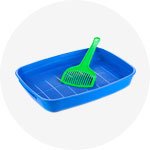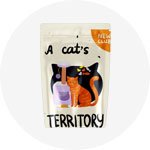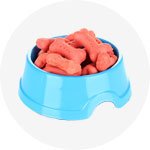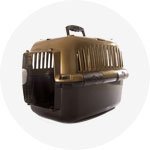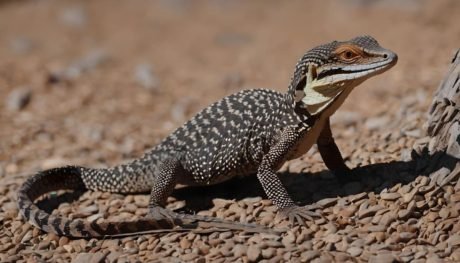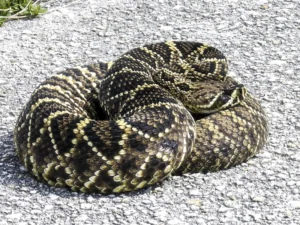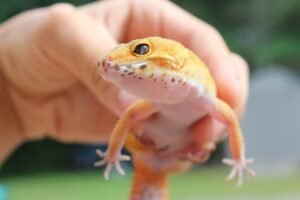Corn Snake VS Ball Python: A Comprehensive Comparison
If you’re a reptile enthusiast looking to add a new member to your pet family, you’ve probably come across the choice between a corn snake and a ball python. These two snake species are popular choices among pet owners due to their manageable size, captivating appearances, and relatively docile behaviour. In this article, we’ll take a closer look at the characteristics, care requirements, and unique aspects of both corn snakes and ball pythons to help you make an informed decision about which snake is the right fit for you.
Corn Snake VS Ball Python: A Comprehensive Comparison
Comparison and the key differences between Corn Snakes and Ball Pythons (Corn Snake VS Ball Python):
| Aspect | Corn Snake | Ball Python |
|---|---|---|
| Scientific Name | Pantherophis guttatus | Python regius |
| Physical Appearance | Vibrant colors, saddle pattern, slender body | Vibrant colours, saddle pattern, slender body |
| Temperament | Active, curious, and relatively docile | Reserved, may ball up when stressed |
| Housing Needs | Prefer both horizontal and vertical space | Prefer snug enclosures and smaller hiding spots |
| Feeding Habits | Carnivorous, eat rodents, more frequent feedings | Carnivorous, eat rodents, less frequent feedings |
| Handling Behavior | Generally more active during handling | May prefer shorter handling sessions |
| Shedding Patterns | Shed every 4-6 weeks, need humid hides | Shed every 4-6 weeks, need humid hides |
| Lifespan | 10-15 years | Up to 30 years |
| Breeding | Bred in captivity with various color morphs | Bred in captivity with various color morphs |
| Common Misconceptions | Not venomous, harmless to humans | Non-venomous, not dangerous with proper handling |
| Suitable For | Beginners, families with children | Beginners, enthusiasts who prefer a more subdued snake |
Physical Appearance (Corn Snake VS Ball Python)
Corn Snake Physical Appearance
Corn snakes are known for their vibrant colors and distinctive patterns. They typically have a slender body with smooth scales. Their color variations can range from bright orange and red to earthy browns and blacks. One of their most recognizable features is the “saddle” pattern along their back, resembling the pattern seen on corn kernels.
Ball Python Physical Appearance
Ball pythons, also called royal pythons, are revered for their striking appearance and unique ball-like defensive posture. They have a thicker build compared to corn snakes and are often darker in color. Their skin displays a range of colors, from deep browns to lighter yellows, and they have beautiful markings that give them an elegant, regal appearance.

Temperament and Behavior: Corn Snake VS Ball Python
Both corn snakes and ball pythons are known for their relatively docile and calm temperaments. Corn snakes are curious and active, often seen exploring their enclosures. They are generally easy to handle and can become quite comfortable with regular interaction. Ball pythons, on the other hand, tend to be more reserved. They might ball up when stressed, hence their name, but they usually relax with gentle handling.

Housing and Enclosure: Corn Snake VS Ball Python
Corn Snake Housing and Enclosure
Corn snakes are active climbers, so their enclosure should provide both horizontal and vertical space. A 20-gallon tank is suitable for juveniles, while adults thrive in a 40-gallon tank. Include climbing branches, hides, and a substrate that retains moisture, like aspen bedding.

Ball Python Housing and Enclosure
Ball pythons are less active and prefer smaller, snug enclosures. A 20 to 30-gallon tank works well for young pythons, while adults are comfortable in a 40-gallon tank. They need hides for security and a substrate that maintains humidity, such as cypress mulch or coconut coir.
Feeding and Diet: Corn Snake VS Ball Python
Corn Snake Feeding and Diet
Corn snakes are carnivorous and primarily eat rodents. Juveniles can be fed newborn mice, while adults consume larger prey like adult mice or small rats. Feed them every 5 to 7 days, adjusting the size of the prey accordingly.

Ball Python Feeding and Diet
Ball pythons also have a rodent-based diet. They eat less frequently than corn snakes, with adult pythons typically being fed every 1 to 2 weeks. It’s essential to monitor their weight and adjust feeding frequency as needed.
Handling and Interaction: Corn Snake VS Ball Python
Both snake species benefit from regular handling to become comfortable around humans. However, corn snakes are generally more active during handling sessions, while ball pythons might prefer shorter interaction periods. Always approach them gently and give them time to acclimate to your touch.
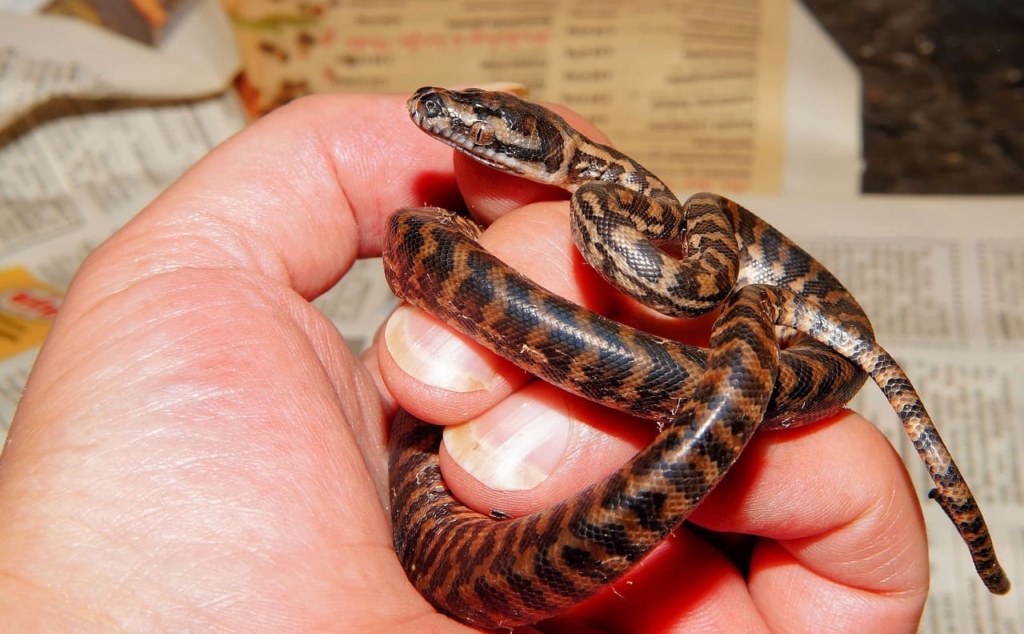
Shedding and Maintenance: Corn Snake VS Ball Python
Snakes shed their skin periodically to accommodate their growing bodies. During shedding, provide a humid hide to help them remove their old skin easily. Maintain proper humidity levels in the enclosure to aid in successful shedding.
Lifespan and Health
Corn snakes have an average lifespan of 10 to 15 years, while ball pythons can live up to 30 years with proper care. Regular health check-ups with a veterinarian who specializes in reptiles are essential to ensure their well-being.
Breeding and Reproduction
Both corn snakes and ball pythons are bred in captivity, with a variety of color morphs available. Breeding requires specific temperature and humidity adjustments to encourage successful reproduction.

Common Misconceptions
It’s important to debunk common misconceptions about these snake species. While corn snakes are not venomous and are harmless to humans, ball pythons are non-venomous as well and are not dangerous if handled with care.
Making Your Choice
Choosing between a corn snake and a ball python depends on your preferences and commitment to care. Consider factors such as temperament, size, appearance, and maintenance requirements when making your decision.
Conclusion on Corn Snake VS Ball Python:
In conclusion, both corn snakes and ball pythons make fascinating and rewarding pets. Their unique characteristics, captivating appearances, and manageable care needs have made them beloved choices among reptile enthusiasts. Whether you opt for the vibrant and active corn snake or the regal and reserved ball python, providing proper care and attention will ensure a fulfilling and enjoyable reptile-owning experience.
Frequently Asked Questions on Corn Snake VS Ball Python:
-
Which snake is more suitable for beginners?
Both corn snakes and ball pythons can be suitable for beginners, but corn snakes tend to be more active and forgiving of handling.
-
Do these snakes require any special lighting?
No, neither corn snakes nor ball pythons require special lighting like some other reptile species
-
Can I house corn snakes and ball pythons together?
It’s not recommended to house different snake species together due to potential stress and health concerns.
-
How often do these snakes shed their skin?
Both corn snakes and ball pythons shed their skin every 4 to 6 weeks, depending on their growth rate.
-
What’s the best way to maintain humidity in their enclosures?
Using a humidity-retaining substrate, providing a humid hide, and misting the enclosure as needed can help maintain proper humidity levels.
-
Which snake is better suited for families with children?
Both corn snakes and ball pythons can be suitable for families with children, but corn snakes’ active nature and smaller size might make them more manageable for younger kids.
-
What are the key differences in care between corn snakes and ball pythons?
Corn snakes require slightly higher humidity levels and more vertical space in their enclosures, while ball pythons need more frequent and smaller meals due to their slower metabolism.
-
Can I handle my snake during shedding?
It’s best to avoid handling your snake during shedding, as they might be more sensitive and irritable during this time. Wait until they’ve completed the shedding process.
-
Do corn snakes and ball pythons require any special heating equipment?
Both species need a warm side and a cooler side in their enclosure, achieved through heating mats or bulbs. Providing a temperature gradient is important for their overall well-being.
-
How can I tell if my snake is in good health?
Look for signs of a healthy snake, including clear and bright eyes, smooth scales, regular feeding and shedding patterns, and an alert and active demeanor.
-
Are there any color morphs unique to either species?
Yes, both corn snakes and ball pythons have various color morphs that result in striking and unique appearances, offering enthusiasts a wide range of options.
-
Can I keep a corn snake and a ball python together in the same enclosure?
It’s not recommended to house different snake species together, as it can lead to stress, competition for resources, and potential health issues.
-
How do I handle my snake for the first time?
Approach your snake gently and confidently, allowing them to become accustomed to your scent and touch. Support their body properly and avoid sudden movements.
-
What kind of enrichment do these snakes need?
Both corn snakes and ball pythons benefit from climbing branches, hides, and occasional changes in their enclosure setup to provide mental stimulation.
-
Can these snakes be kept in groups?
While both species are usually solitary in the wild, they are generally housed individually in captivity to prevent stress and territorial conflicts.
Recommended related to Corn Snake VS Ball Python:
Rat Snakes | Characteristics, 40 Types, Behaviour, Facts, Care Tips
Armadillos | Characteristics, Behaviour, 10 Types, Care Tips



















